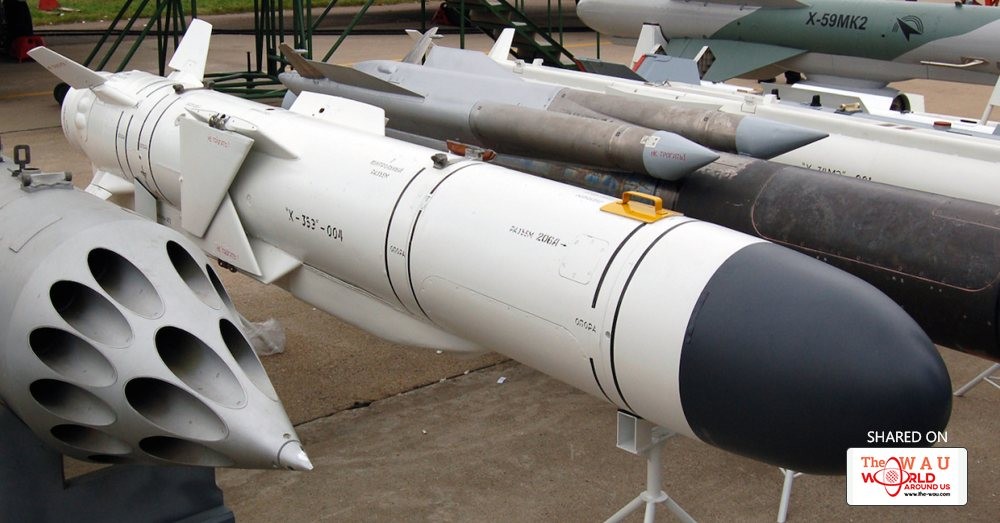In the quarter century since the end of the Cold War, much of North Korea’s conventional-weapons capability has quietly aged into obsolescence. Abandoned by the now-defunct Soviet Union and China, Pyongyang’s arsenal of tanks, ships, planes and artillery appears trapped in the 1980s—or earlier. A few weapons, however, including a new antiship missile fired just last week, are fairly new, prompting questions as to exactly where they came from.
After the Korean War, the Korean People’s Army was rebuilt with Soviet and Chinese weapons. Wartime T-34 tanks were replaced with Soviet-built T-62 and T-55 tanks in the late 1960s and early 1970s, and a large fleet of seventy-seven Romeo-class submarines was purchased from China. Pyongyang bought from both countries, favoring one over the other as the political winds blew. One of the country’s last major purchases was a fleet of seventeen MiG-29 “Fulcrum” multirole fighters and thirty-six Su-25 Frogfoot attack jets.
The breakup of the Soviet Union in 1991 left the East Asian dictatorship without a patron that dispensed weapons on easy credit terms, and the lack of modern gear is telling. North Korea’s latest tanks are still based on the T-62, and Romeo-class submarines, one of which Kim Jong-un famously took for a ride in 2014, are still in active service. Occasional upgrades, such as the addition of Bulsae (“Firebird”) antitank missiles to the Chonma-ho main battle tank, do little to upgrade the combat effectiveness of what is in reality an obsolete tank.
Certain weapons, however, stand in stark contrast to the rest of North Korea’s aging weapons collection. One is what appears to be a copy of the Russian Kh-35 antiship cruise missile. Known in Russia as the Kh-35 Uran and to NATO as the SS-N-25 “Switchblade,” the Kh-35 has a range of seventy nautical miles and a 320-pound high-explosive warhead, flying above the wavetops to stay undetected as long as possible. Guided by active radar, the subsonic missile is roughly comparable to the American Harpoon antiship missile, earning it the nickname “Harpoonski.”
Although the Uran’s development predated the end of the Cold War, the missile never entered Soviet service, joining the Russian Navy only in 2003. The missile first surfaced in North Korea in June 2014, when it briefly appeared in a North Korean propaganda video. The missile, which appeared to be launched from a ship, was identical to the Uran, although the shipboard mounting hardware appeared different from Russian hardware. North Korea launched a volley of four Kh-35s on June 7 from the vicinity of Wonsan into the Sea of Japan.
Another weapon that has shown up in North Korean hands, seemingly out of thin air, is Pon’gae-5 long-range surface-to-air missile system. Designated KN-06 by the U.S. intelligence community, the Pon’gae-5 appears be be a clone of the Russian S-300 missile or the Chinese Chinese HQ-9 surface-to-air missile, which itself is likely a S-300 clone.
The Pon’gae-5’s uncertain provenance makes determining its capabilities tricky. The S-300 is a long-range missile system capable of intercepting targets at all altitudes and is roughly similar to earlier models of the American Patriot missile. It also appears to have a phased-array radar similar to the FLAP LID radar used by the S-300. A test launch was conducted the weekend of May 24, during which North Korea’s KCNA state news agency reported “defects” uncovered in previous testing were “perfectly overcome.” According to the news agency, the Pon’gae-5 is now considered operational.
Finally, a new rocket artillery system recently emerged in North Korea. Known as the KN-09 multiple-rocket launcher, the system consists of eight three-hundred-millimeter rocket-launcher tubes on a 6x6 HOWO 6×6 All-wheel Drive Cargo Truck chassis. The presence of fins on the rocket’s nose suggests each rocket is precision-guided, using either China’s Baidu or Russia’s GLONASS satellite-based global positioning systems.
Where did these mystery weapons come from? There are several theories, and there are almost certainly different origins for different weapons.
In the case of Uran and the Pon’gae-5, one theory is espionage. North Korean agents were known to have contacted ex-Soviet military scientists and engineers after the breakup of the USSR, and may have traded cash for expertise. North Korea may have been unable to act on this information in the 1990s, when the economy crashed, but the country’s slow rebound may have freed up the resources to pursue a precision-guided tactical-rocket program.
Another possibility is that these weapons are the result of indirect technology transfers from third parties. Uran missiles could have come from Myanmar’s former military government, which had strong ties to North Korea. Myanmar was known to have purchased Uran missiles from Russia, and could have transferred them to North Korea. Another possibility is Iran. Pon’gae-5 could have come from Syria, a S-300 missile operator, and KN-09 multiple rocket launchers could be based on Chinese A-100 systems provided to Pakistan.
...[ Continue to next page ]
Share This Post















